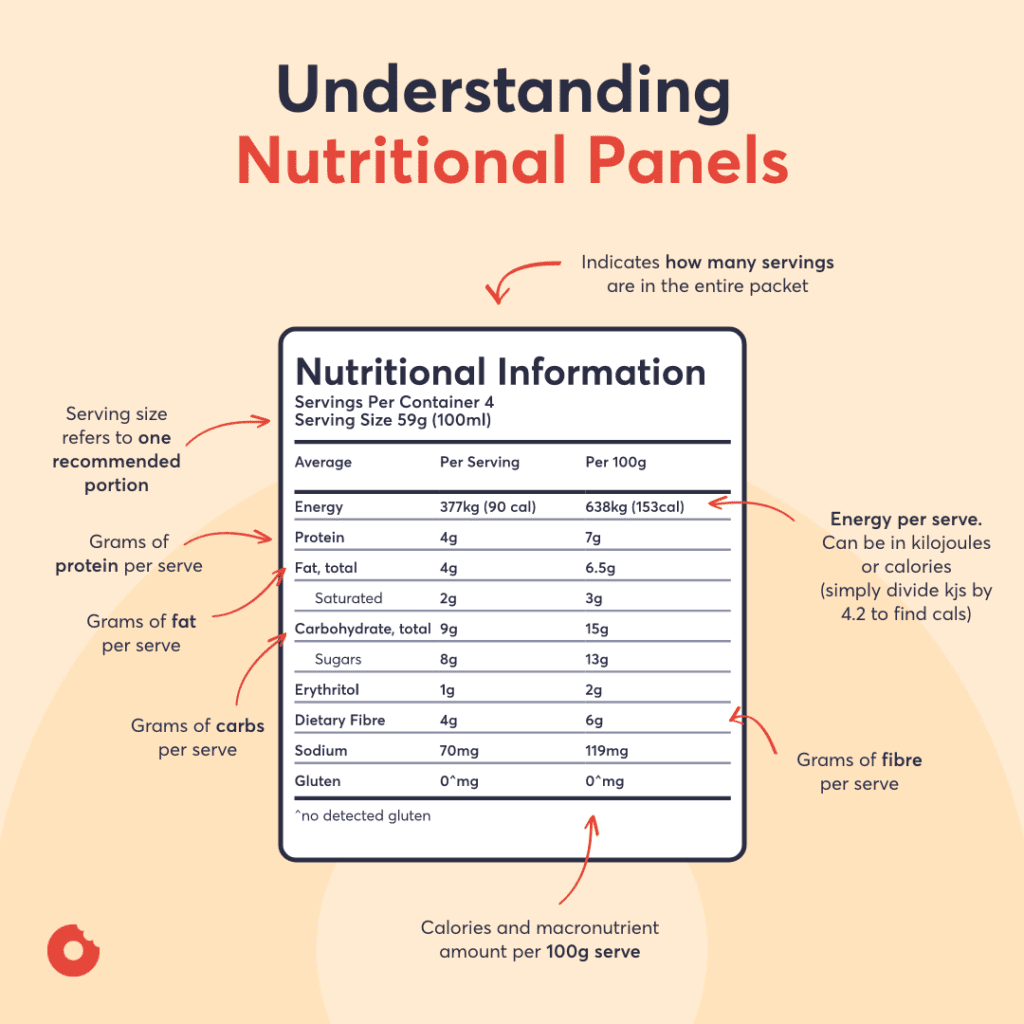In this comprehensive guide, we’ll delve into the art of deciphering nutrition labels, empowering you to make informed and healthier food choices. Whether you’re a seasoned nutrition enthusiast or just embarking on your wellness journey, understanding nutrition labels is paramount. Let’s break it down step by step.
Table of Contents
Why Nutrition Labels Matter:
Nutrition labels serve as your roadmap to a healthier lifestyle. By decoding these labels, you gain valuable insights into the nutritional composition of the foods you consume, facilitating choices aligned with your health goals.
At Equalution, we are here to help you navigate food labels easier with our food tracker app, allowing you to track meals and ingredients in the food diary.
Key Elements of Nutrition Labels:
Serving Size:
Start by checking the serving size; it sets the foundation for understanding the rest of the label. If you’re following a personalised meal plan, consider the serving size as outlined in your plan.
Calories:
Keep a vigilant eye on the calorie count per serving to manage your overall energy intake effectively and help you work towards your health goals. Utilise a reliable calorie tracker app, to monitor your daily intake, ensuring alignment with your personalised meal plan.
Nutrients:
Pay attention to essential nutrients, known as macro and micronutrients. Macros include protein, fat, carbohydrates, and fibre, with micronutrients including vitamins and minerals.
If a food product is particularly high in one macronutrient, then ensure that you’re having a higher intake of another macronutrient within that day.
A nutrition tracker app can assist you in monitoring your nutrient intake and ensuring you meet your dietary requirements.
Some other areas of a nutrition label worth looking over include the ingredient list. Understanding the ingredients list is crucial as it provides insights into the quality of the product. Ingredients are listed in descending order by weight, with the primary ingredient listed first.
These ingredients may not always be the most beneficial for health either! We encourage you to be vigilant about hidden sugars and additives, which may go by different names, such as high-fructose corn syrup or artificial sweeteners. Opt for products with minimal or no added sugars for a healthier option.

Arming yourself with nutrition information to make conscious food choices that align with your health goals is paramount to looking after your health in the long term. Consider the nutritional value of a variety of foods, your dietary requirements, and any specific health concerns that may influence your decision to purchase a food product.
Putting your knowledge into practice:
- Ready to embark on your wellness journey? Discover how Equalution can create a nutrition plan personalised to your needs.
- Elevate your nutritional knowledge, by learning about how to make healthy eating easier.

Congratulations! You’re now equipped with the knowledge to navigate nutrition labels effectively. Remember, making informed choices is a powerful step towards achieving your health and wellness goals. For personalised guidance, connect with us at Equalution – your partner in nutrition excellence.

